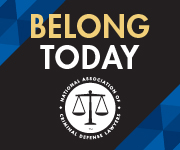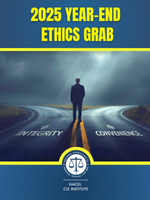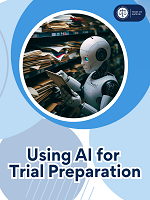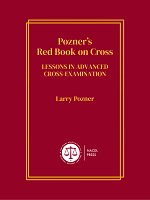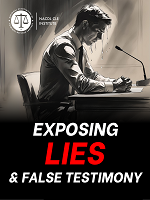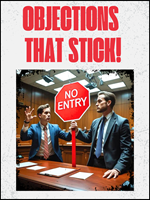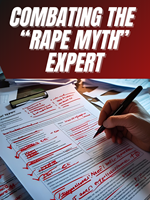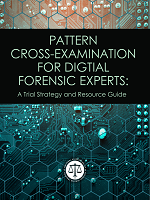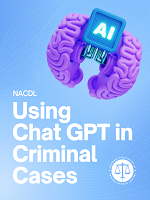Access to The Champion archive is one of many exclusive member benefits. It’s normally restricted to just NACDL members. However, this content, and others like it, is available to everyone in order to educate the public on why criminal justice reform is a necessity.
No one devotes more time thinking about juries than the practicing criminal defense attorney. For those in that slim segment of the legal profession who represent the accused, virtually every bit of client advice hinges on an analysis of the likelihood of success with a jury. Indeed, in an era in which severe, mandatory sentences magnify the risk of trial, the lawyer’s assessment of the client’s chances of obtaining a favorable jury is the most vital function the lawyer performs for the client. Even though the percentage of cases tried is small, the jury looms large in every defense lawyer’s practice. Is there any defense lawyer who is not already pondering how an imaginary jury would react even before the first client meeting has concluded?
This “jury issue” of The Champion recognizes that a lawyer’s ability to confidently and effectively select a jury that will give a client the best chance for acquittal is essential — not just for the cases that go to trial, but also to determine which cases should not. Several articles focus specifically on cutting-edge jury selection techniques.
Linda Moreno and Joe Guastaferro (page 20) explore strategies for using a jury questionnaire to improve the chances of selecting a fair and impartial jury, especially in high profile cases. Patrick Brayer and Kim C. Freter (page 26) engage in a fascinating debate about the merits of an innovative, but somewhat daunting technique of jury selection in which the lawyer explicitly asks prospective jurors to discuss their race, gender, and ethnicity in voir dire. Finally, Fredilyn Sison (page 44) urges the use of a “kinder, gentler, and more respectful” psychodramatic method of jury selection — one that is associated with its founder, the legendary Gerry L. Spence.
Two other articles address a unique aspect of American juries: their inherent power to prevent an injustice, even when the law and facts amassed by the government appear to dictate it. Jury nullification, with its roots in England and colonial America, remains the last vestige of unfiltered people power. Jeffrey Buckels (page 53) discusses his efforts to tap into that power by reminding practitioners that a jury’s unassailable authority to render a not guilty verdict may yet provide hope for the unjustly accused, even in the most hopeless cases. And, in a veritable tour de force on America’s incoherent approach to gun possession laws, U.S. District Judge Frederic Block (page 12) not only confirms that jury nullification is alive and well, but wonders whether judicial efforts to constrain that inherent jury power may have gone too far.1 As does Mr. Buckels, Judge Block focuses on felon-in-possession cases, but in his cases the juries did not convict — even though the law and facts clearly established guilt beyond a reasonable doubt.
Judge Block discusses how courts seek to preclude these results through the use of potent instructions to compel jurors to apply the law as given by the judge, irrespective of ameliorating circumstances. Indeed, in his circuit, the law obligates trial judges to prevent nullification by dismissing jurors who are reported during deliberation to be determined to acquit, irrespective of the evidence.2
This effort to limit a fundamental power of the American jury is severely misguided. The judiciary should not go out of its way to be complicit in those rare cases of obvious governmental abuse. Judge Block briefly and correctly refers to the John Peter Zenger trial in 1735 as the foremost historical example of jury nullification in the United States. The precipitating events leading to that trial, which is most famously remembered for its vindication of freedom of the press, are often overlooked. They paint a chilling picture of governmental excess and injustice, implicating an abuse of executive authority and a breathtaking assault on the independence of the judiciary.3 Viewed in the context of that injustice, it is easy to see why the jury asserted its inherent power.
In 1731, Colonial Governor William Cosby arrived in New York and demanded that Rip Van Dam, senior member of the New York Provincial Council and acting governor, split his salary with him. Van Dam refused, prompting Cosby to sue him. Cosby attempted to circumvent the jury system by creating a special court to hear the case, but New York Chief Justice Lewis Morris ruled against him. Cosby retaliated by removing Morris from the bench. John Peter Zenger, a German émigré who had risen from indentured apprentice to print shop owner, published an attack on Cosby in his New York Weekly Journal. This led to Zenger’s arrest for seditious libel.
Cosby tried to rig Zenger’s trial by selecting a crony, James Delancey, to oversee the case. Delancey imposed excessive bail, ensuring that Zenger remained imprisoned. At trial, he instructed the jury that its sole duty was to determine whether Zenger had printed the articles, a fact Zenger never disputed. He declared that any attack on the governor’s competence was seditious libel. Zenger was represented by Andrew Hamilton, the renowned Philadelphia lawyer, who was also an architect and the designer of Independence Hall. Hamilton came to New York to take the case after Zenger’s original lawyers were disbarred for criticizing the court.
Hamilton argued the truth of Zenger’s writings, reminding jurors that their decision would affect all those living under British rule, and urged that a not guilty verdict would strike a blow against tyranny and arbitrary power. He told the jury that they “are to see with their own eyes, to hear with their own ears, and to make use of their own consciences and understandings in judging of the lives, liberties, or estates of their fellow subjects.”4
The jury acquitted in 10 minutes. Former Chief Justice Morris called the trial “the germ of American freedom, the morning star of that liberty which revolutionized America.”
More than two and one-half centuries later, when the ABA celebrated the American jury as its Law Day theme in 2005, ABA President Robert Grey, Jr., called juries “the handbrake on the abuse of power.” Notwithstanding judicial efforts to compel juries to reflexively apply the law, irrespective of manifest injustice, a vestigial power remains in the hands of jurors. Thanks to the inviolate secrecy of jury deliberations and the finality of a verdict of acquittal, juries still have the power to see with their own eyes, hear with their own ears, and speak with their own consciences, even when their verdict appears to fly in the face of fact and law. And well they should in a democracy. If there is to remain a handbrake on the abuse of power, it is appropriate that it forever remain in the hands of the citizenry, the lay people who are called to serve as the buffer between the awesome power of a state accusation and the individual.
Whether it is the usual case, in which the issue is merely to determine if the government’s proof is sufficient to convict, or the atypical case, in which the prosecution itself is a fundamentally unjust application of law, society needs informed and dedicated juries. Criminal defense lawyers, indeed all lawyers, must educate the public about the jury’s vital role in preserving liberty, and must educate themselves to improve their jury selection techniques. That is the only way to perpetuate the American jury’s role as a handbrake on abuse of power. We hope this issue of The Champion contributes in some small way to that great cause.
Notes
- Indeed, Judge Block goes a step further. He observes that in the real world the “interests of justice” is the internal compass that helps guide a judge’s decision-making. To ensure that justice remains the hallmark of jurisprudence, he urges enactment of a federal law, similar to a law he helped shape in New York State, that would empower judges to dismiss charges in the interests of justice in narrow, exceptional cases.
- United States v. Thomas, 106 F.3d 606, 616 (2d Cir. 1997).
- I first offered these observations about the Zenger trial in a column I wrote in conjunction with the ABA’s celebration of the American jury as its 2005 Law Day theme. That column, The American Jury: Power to the People appeared in the May 2005 edition of The County Lawyer, the monthly publication of the New York County Lawyers’ Association. For an edifying and delightful treatment of the Zenger case, in which I found the quote from Andrew Hamilton’s summation, I acknowledge a wonderful collection of historical events in legal history entitled Vignettes of Legal History by Julius J. Marke, published by Fred B. Rothman & Co. (1965).
- Id. at 238.

